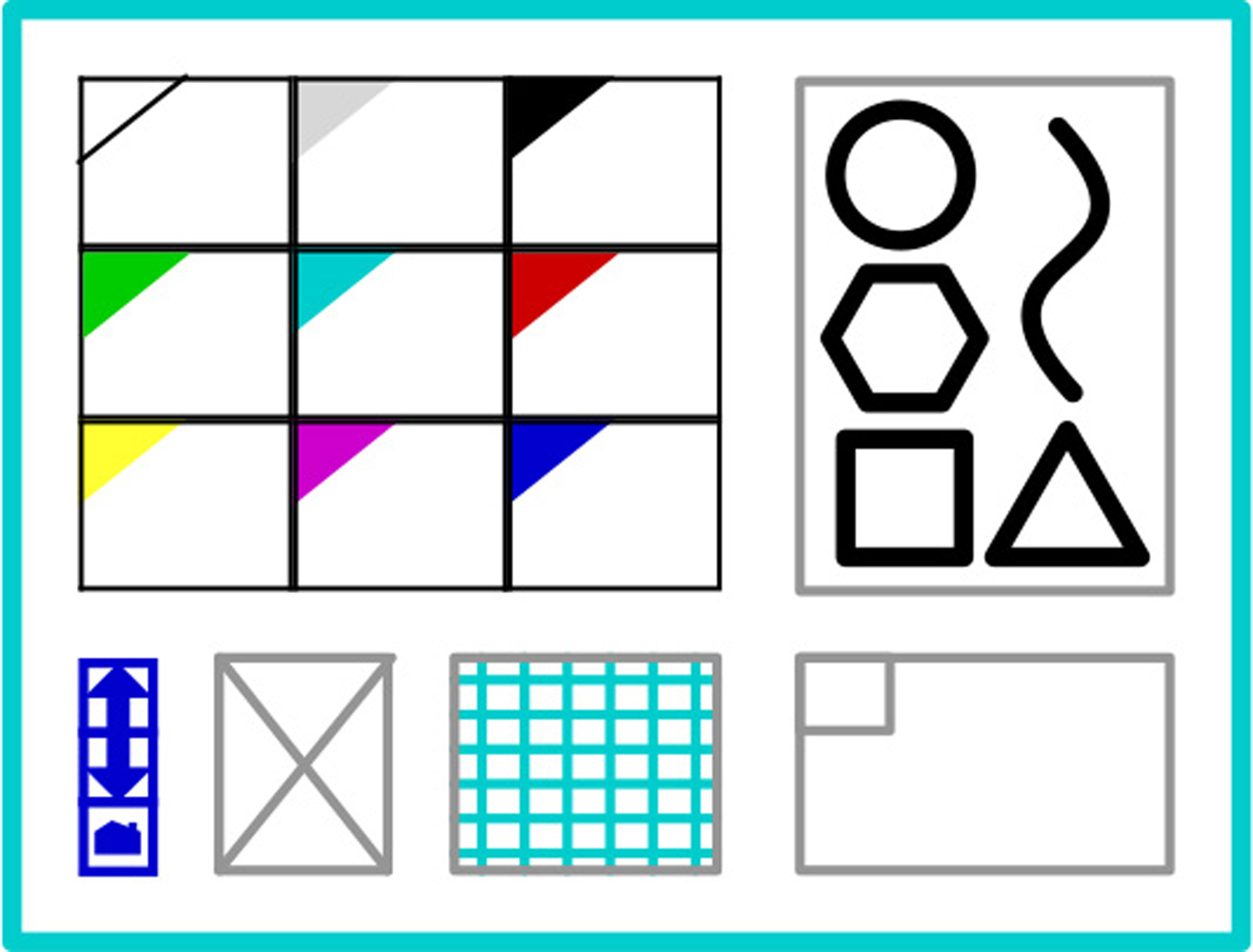“Toolglass and magic lenses: the see-through interface” by Bier, Stone, Pier, Buxton and DeRose
Conference:
Type(s):
Title:
- Toolglass and magic lenses: the see-through interface
Presenter(s)/Author(s):
Abstract:
ToolglassTM widgets are new user interface tools that can appear, as though on a transparent sheet of glass, between an application and a traditional cursor. They can be positioned with one hand while the other positions the cursor. The widgets provide a rich and concise vocabulary for operating on application objects. These widgets may incorporate visual filters, called Magic LensTM filters, that modify the presentation of application objects to reveal hidden information, to enhance data of interest, or to suppress distracting information. Together, these tools form a see-through interface that offers many advantages over traditional controls. They provide a new style of interaction that better exploits the user?s everyday skills. They can reduce steps, cursor motion, and errors. Many widgets can be provided in a user interface, by designers and by users, without requiring dedicated screen space. In addition, lenses provide rich context-dependent feedback and the ability to view details and context simultaneously. Our widgets and lenses can be combined to form operation and viewing macros, and can be used over multiple applications.
References:
1. Adobe Systems Incorporated. [email protected] Language Reference Manual, second edition. Addison-Wesley, 1990.
2. Bartlett, Joel F. Transparent Controls for Interactive Graphics. WRL Technical Note TN-30, Digital Equipment Corp., Palo Alto, CA. July 1992.
3. Beck, Kent, Becher, Jon, and Zaide, Liu. Integrating Profiling into Debugging. Proceedings of the 1991 International Conference on Parallel Processing, Vol. H, Software, August 1991, pp. II-284-II-285.
4. Guiard, Yves. Asymmetric Division of Labor in Human Skilled Bimanual Action: The Kinematic Chain as a Model. The Journal of Motor Behavior, 19, 4, (1987), pp. 486-517.
5. Bier, Eric A. and Freeman, Steve. MMM: A User Interface Architecture for Shared Editors on a Single Screen. Proceedings of the ACM SIGGRAPH Symposium on User Intelface Software and Technology (Hilton Head, SC, November 11-13), ACM, New York, (1991), pp. 79-86.
6. Bier, Eric A., EmbeddedButtons: Supporting Buttons in Documents. ACM Transactions on Information Systems, 10, 4, (1992), pp. 381-407.
7. Buxton, William and Myers, Brad A. A Study in Two- Handed Input. Proceedings of CHI ’86 (Boston, MA, April 13-17), ACM, New York, (1986), pp. 321-326.
8. Buxton, William. There’s More to Interaction Than Meets the Eye: Some Issues in Manual Input. Readings in Human-Computer Interaction: A Multidisciplinary Approach. (Ronald M. Baecker, William A.S. Buxton, editors). Morgan Kaufmann Publishers, Inc., San Mateo, CA. 1987.
9. Dill, John. An Application of Color Graphics to the Display of Surface Curvature. Proceedings of SIGGRAPH ’81 (Dallas, Texas, August 3-7). Computer Graphics, 15, 3, (1981), pp. 153-161.
10. Goldberg, Adele and Robson, Dave, A Metaphor for User Interface Design, Proceedings of the University of Hawaii Twelfth Annual Symposium on System Sciences, Honolulu, January 4-6, (1979), pp.148-157.
11. Goodman, Danny. The Complete HyperCard Handbook. Bantam Books, 1987.
12. Harrington, Steven J. and Buckley, Robert R. Interpress, The Source Book. Simon & Schuster, Inc. New York, NY. 1988.
13. Kabbash, Paul, MacKenzie, I. Scott, and Buxton, William. Human Performance Using Computer Input Devices in the Preferred and Non-preferred Hands. Proceedings of InterCHI ’93, (Amsterdam, April 24-29), pp. 474-481.
14. Krasner, Glenn and Hope, Stephen, A Cookbook for Using the Model-View-Controller User Interface Paradigm in Smalltalk-80, Journal of Object-Oriented Programming, 1, 3, (1988), pp. 26-49.
15. Krueger, Myron W., Gionfriddo, Thomas, and Hinrichsen, Katrin. VIDEOPLACE – An Artificial Reality. Proceedings of CHI ’85 (San Francisco, April 14-18). ACM, New York, (1985), pp. 35-40.
16. Kurlander, David and Bier, Eric A. Graphical Search and Replace. Proceedings of SIGGRAPH ’88 (Atlanta, Georgia, August 1-5) Computer Graphics, 22, 4, (1988), pp. 113-120.
17. MacDraw Manual. Apple Computer Inc. Cupertino, CA 95014, 1984.
18. Newman, William. Markup User’s Manual. Alto User’s Handbook, Xerox PARC technical report, (1979), pp. 85-96.
19. Perlin, Ken and Fox, David. Pad: An Alternative Approach to the Computer Interface. this proceedings.
20. Pier, Ken, Bier, Eric, and Stone, Maureen. An Introduction to Gargoyle: An Interactive Illustration Tool. Proceedings of the Intl. Conf. on Electronic Publishing, Document Manipulation and Typography (Nice, France, April). Cambridge Univ. Press, (1988), pp. 223-238.
21. Sarkar, Manojit and Brown, Marc H. Graphical Fisheye Views of Graphs. Proceedings of CHI ’92, (Monterey, CA, May 3-5, 1992) ACM, New York, (1992), pp. 83-91.
22. Spence, Robert and Apperley, Mark. Data Base Navigation: An Office Environment of the Professional. Behaviour and Invormation Technology, 1, 1, (1982), 43-54.
23. ImageVision, Silicon Graphics Inc., Mountain View, CA.
24. Swinehart, Daniel C., Zellweger, Polle T., Beach, Richard J., Hagmann, Robert B. A Structural View of the Cedar Programming Environment. ACM Transactions on Programming Languages and Systems, 8, 4, (1986), pp. 419-490.
25. Weyer, Stephen A. and Borning, Alan H., A Prototype Electronic Encyclopedia, ACM Transactions on Office Systems, 3, 1, (1985), pp. 63-88.




